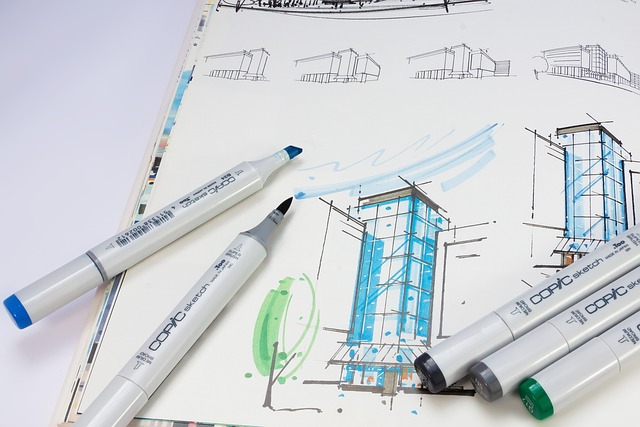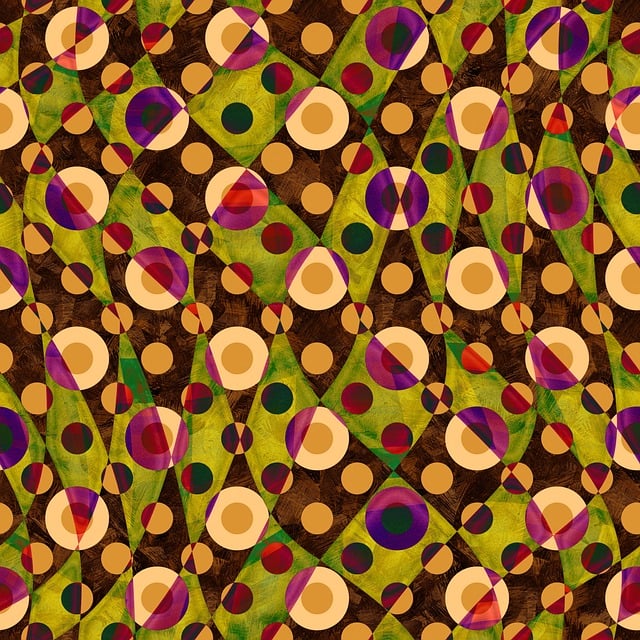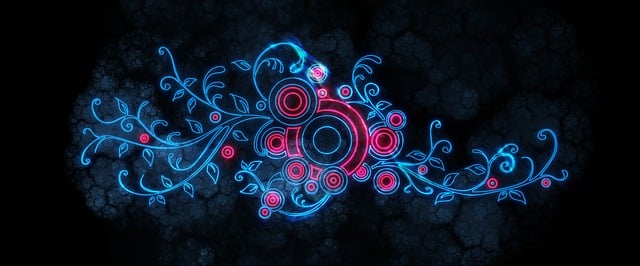Graphic Design is a powerful art form that blends aesthetics and psychology to create visually captivating content. Professional graphic designers leverage their expertise in typography, imagery, color, and layout across diverse mediums, from branding and marketing to user interfaces and editorial design. They combine artistic vision with technical proficiency, staying abreast of industry trends and software tools to produce impactful visuals. In a competitive field, they cultivate unique styles while adhering to ethical considerations, ensuring their designs promote positive messages and respect intellectual property. Continuous learning and adaptability are crucial for success in this dynamic realm, where staying current with technology and industry developments is key to attracting clients and offering innovative solutions.
Professional Graphic Design is an art that combines aesthetics and technology to communicate visual messages. In today’s digital landscape, it plays a pivotal role in shaping brands and engaging audiences. This comprehensive guide delves into the multifaceted world of graphic design, exploring essential aspects from understanding core principles to mastering project management and ethical practices. We uncover the skills, tools, and strategies that separate exceptional designers, offering insights for both aspiring professionals and those seeking to enhance their graphic design expertise.
Understanding Graphic Design: A Comprehensive Overview

Graphic Design is an art and communication tool that involves creating visual content to convey messages, persuade audiences, or enhance brand identity. It’s a multifaceted discipline that blends aesthetics with psychology, ensuring visually appealing and impactful designs. At its core, graphic design leverages typography, imagery, color, and layout to tell stories and engage viewers.
Professional graphic designers possess a deep understanding of design principles, software tools, and industry trends. They can adapt their style to suit various projects, from branding and marketing materials to user interfaces and editorial layouts. Their expertise enables them to create designs that not only meet client requirements but also capture attention, evoke emotions, and effectively communicate complex ideas through simple yet powerful visuals.
The Role of a Professional Graphic Designer

Professional Graphic Designers play a pivotal role in today’s visual landscape, where visuals significantly impact communication and brand identity. Their expertise lies in translating ideas and messages into captivating visual forms, ensuring they resonate with audiences. These designers possess a keen eye for aesthetics, a deep understanding of color theory, typography, and layout, and the skill to use various design software tools fluently. They collaborate closely with clients to grasp their vision, objectives, and target audience, interpreting these elements into visually appealing and effective branding, marketing collateral, web interfaces, and print materials.
Beyond aesthetics, Graphic Designers critically navigate the digital era, staying abreast of emerging trends and technologies. They enhance user experiences through intuitive design, ensuring that digital platforms are not only visually engaging but also functional and accessible. Their work involves creating not just images but complete visual narratives that tell stories, evoke emotions, and drive actions—essential components in successful branding and marketing strategies.
Essential Skills and Tools for Graphic Design Excellence

In the realm of professional graphic design, mastering certain essential skills and tools is pivotal for achieving excellence. Firstly, a keen eye for aesthetics and visual composition is indispensable. This involves understanding principles like balance, contrast, and alignment to create visually appealing layouts. Graphic designers must also possess proficient knowledge of various software tools such as Adobe Creative Suite (Photoshop, Illustrator, InDesign) – industry standards that enable them to bring their creative visions to life with precision.
Additionally, strong communication skills are vital for effectively translating client briefs into design concepts. Designers should be adept at interpreting requirements, asking clarifying questions, and presenting their work in a clear and compelling manner. Proficiency in typography, color theory, and layout grids further enhances a designer’s ability to create cohesive and impactful visual solutions, solidifying their role as creative problem-solvers in the dynamic world of graphic design.
Developing a Unique Design Esthetic

In the realm of graphic design, developing a unique design aesthetic is paramount for standing out in a competitive market. It’s not merely about aesthetics; it’s a strategic choice that reflects the brand’s identity and resonates with the target audience. Professional Graphic Designers must cultivate their own style by exploring diverse creative approaches, drawing inspiration from various sources like nature, art history, or contemporary trends, and integrating them into their work. This process involves understanding color theory, typography, composition, and layout to craft visually appealing designs that capture attention and convey messages effectively.
A distinct design aesthetic offers more than just visual appeal; it creates a lasting impression and fosters brand recognition. By embracing originality, designers can elevate their work from generic to exceptional, making their Graphic Design services in demand across industries. This uniqueness also allows designers to cater to specific client needs, ensuring that each project feels tailored and memorable, thus enhancing the overall graphic design experience.
The Client-Designer Relationship: Effective Communication

In the realm of professional graphic design, the client-designer relationship is a dynamic and collaborative dance. Effective communication forms the backbone of this partnership, ensuring that the final product aligns perfectly with the client’s vision and expectations. A successful designer actively listens to their client’s ideas, goals, and feedback, translating them into visually stunning designs that resonate with the target audience.
Clear and consistent dialogue allows designers to clarify any uncertainties, understand the brand identity, and incorporate unique elements that set the project apart in a crowded digital landscape. This collaborative approach not only fosters trust but also enables the designer to make informed decisions, resulting in innovative and impactful Graphic Design solutions.
Project Management: From Concept to Completion

In the realm of professional Graphic Design, efficient project management is the backbone that transforms creative concepts into tangible outcomes. It begins with a clear understanding of the client’s vision and requirements, where designers play a pivotal role in interpreting and translating ideas into a structured plan. This process involves breaking down complex designs into manageable tasks, setting realistic deadlines, and allocating resources effectively.
Effective project management ensures a smooth workflow from concept to completion. Designers utilize various tools and methodologies to organize their work, collaborate with team members, and keep clients informed. By staying organized, meeting deadlines, and maintaining open communication, graphic designers deliver high-quality work that meets client expectations, ultimately fostering strong professional relationships and solidifying their reputation in the industry.
Ethical Considerations in Graphic Design Practice

In the realm of graphic design, professionals must navigate a landscape where their creative choices can have significant impacts. Ethical considerations play a pivotal role in shaping the practice of Graphic Design. Designers are increasingly aware of their responsibility to convey messages that promote social good, cultural sensitivity, and environmental sustainability. This includes careful selection of imagery, typography, and color palettes that do not perpetuate stereotypes or offend specific communities.
Furthermore, the digital age has brought about challenges related to copyright infringement and plagiarism. Graphic designers must respect intellectual property rights by obtaining necessary permissions and giving proper credit when using existing works. Transparency in design processes, avoiding cultural appropriation, and ensuring fair use of resources are key ethical practices that contribute to the integrity of the profession and foster positive impacts in today’s visual communication landscape.
Staying Updated: Trends and Innovations in the Field

In the dynamic world of graphic design, staying ahead is paramount. Professionals must constantly evolve and adapt to the latest trends and innovations to remain competitive. This involves keeping up with cutting-edge tools and software that streamline processes and open new creative avenues. From AI-driven design assistants to immersive virtual reality experiences, the field is being revolutionized at a rapid pace.
By embracing these advancements, graphic designers can not only enhance their efficiency but also push the boundaries of visual storytelling. They can create impactful designs that resonate with modern audiences, ensuring their work stands out in a crowded digital landscape. Staying informed about industry trends allows professionals to offer fresh perspectives and meet the evolving needs of clients across various sectors.
Building a Successful Career in Professional Graphic Design

Building a successful career in professional graphic design requires a blend of creativity, technical skill, and strategic thinking. To stand out in this competitive field, designers must cultivate a unique aesthetic and style that showcases their talents and caters to diverse client needs. Continuous learning and staying abreast of industry trends are paramount; tools and software evolve, and understanding new techniques ensures relevance and adaptability.
Networking and building a strong portfolio are also essential. Collaborating with peers, joining design communities, and participating in industry events open doors to opportunities and mentorship. A well-curated online presence, showcasing the best projects and testimonials from satisfied clients, can significantly enhance a designer’s reputation. Ultimately, successful graphic designers combine artistic vision with practical business skills, enabling them to thrive in an ever-changing creative landscape.
